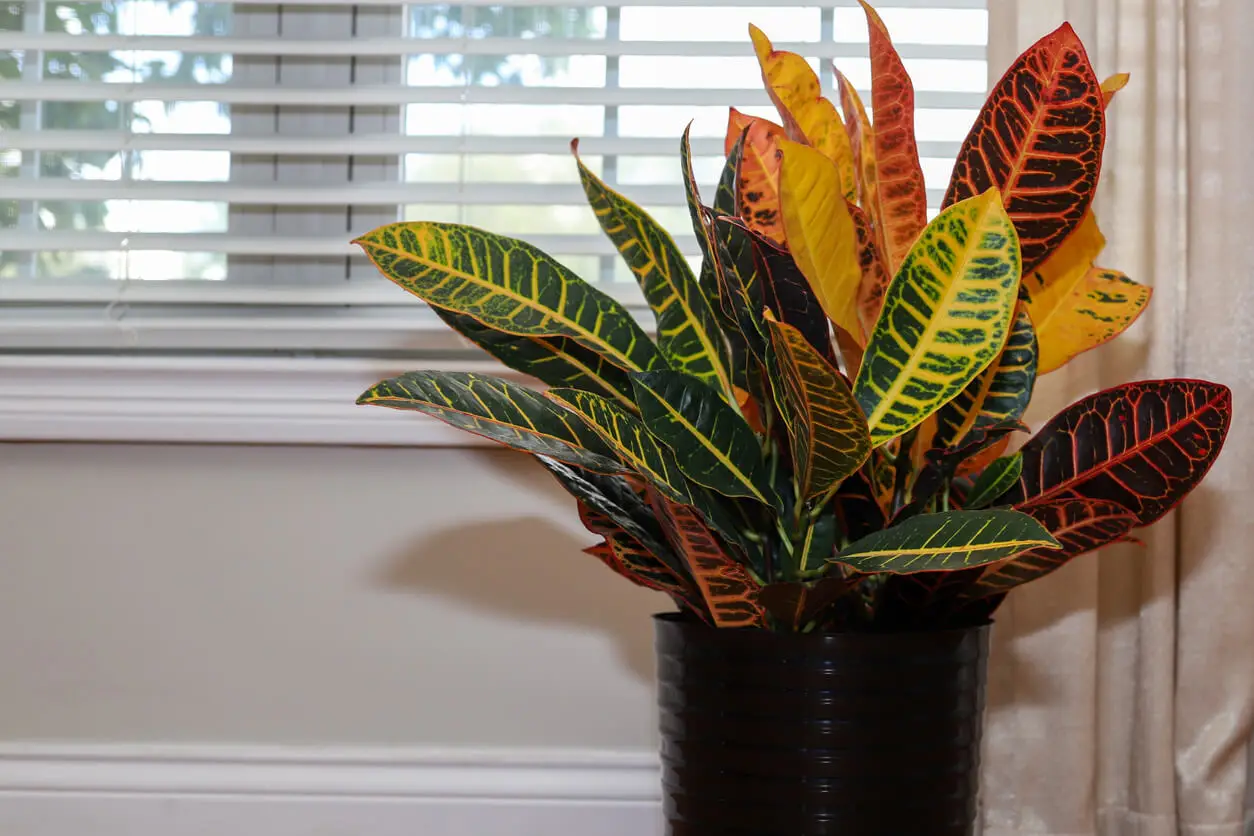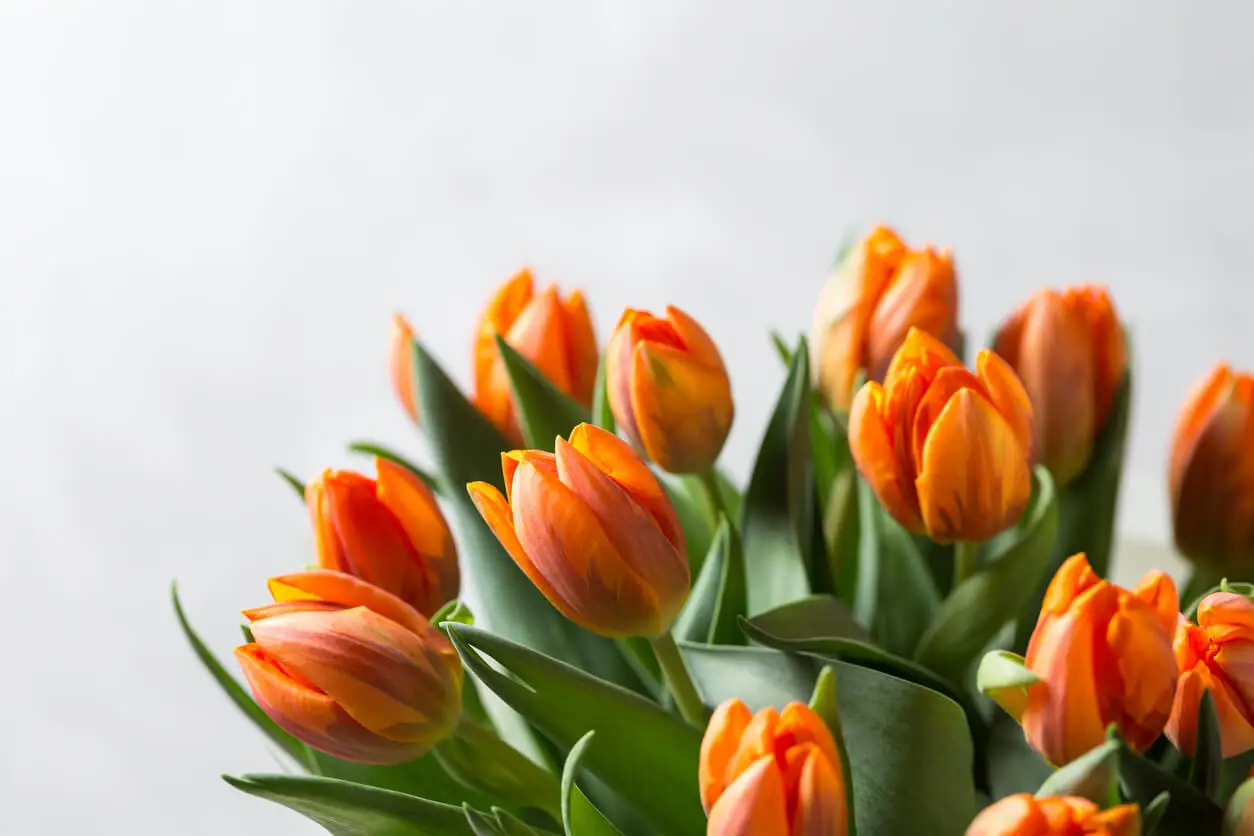10 Orange Flowering Garden Plants and Their Care

Orange is a particular color. It’s generally associated with strong emotions, such as joy, optimism, and warmth. Achieving the presence of this shade through vegetation brings vitality and energy to the home. For that, it’s possible to incorporate orange flowering garden plants with orange flowers.
In addition, this is a color with a lot of brightness, but without reaching the strength of red. It can be combined with a wide range of tones, among which blue, white, and beige stand out.
With a series of recommendations, the color can be obtained through flowers. And with some simple care, it’s possible to maintain them throughout the year.
Why have garden plants with orange flowers?
The color orange is linked, according to psychology, with feelings of enthusiasm and joy. In addition, its strong and striking hue fits well with sociable beings. Active and original personalities link well with this tone.
From a spiritual perspective, some Eastern cultures associate orange with enlightenment. It’s one of the most important colors in Buddhism, which is why its monks wear it in their clothing. In Hinduism, it’s linked to the deity Krishna and to the path of perfection.
The meaning of the color orange in the home
For the Chinese philosophy of feng shui the presence of the color orange in a space suggests euphoria, sensuality, and strong emotions. This is due to its proximity to the reddish hue and therefore, to that of an element as important as fire. Thus, it’s advisable to include it in spaces dedicated to social relations, such as the living room.
In addition, orange is a tone that can be combined in various ways. For example, you can do this with a soft range such as beige, gray, or white. However, its opposite color, blue, is one of the most chosen to generate a deep contrast in the decoration.
This combination generates a very cheerful dynamic, so it is ideal in children’s rooms. It’s important to incorporate orange in subtle ways, due to its strength and striking condition. A perfect way is through garden plants with orange flowers.

Discover how to care for these orange flowering garden plants
The species that provide an orange hue, through their leaves or flowers, are very varied. Some are better suited to indoor environments and others to patios or gardens. To know which one best fits the desired space, it’s a good idea to take a look at its characteristics and care.
Continue reading: Check Out These 10 Garden Plants that Bloom in Autumn
1. Croton
The first option is a tricolor variant, which will always bring cheerful and optimistic tones. Codiaeum variegatum, better known as croton, is a species whose leaves have one of the most colorful, varied, and striking ranges for interiors. Its presence transforms environments into luminous and pleasant spaces.
It provides oranges, but also greens, reddish and yellowish colors, which makes it an ideal choice for living rooms, hallways, and bedrooms. Its care is simple; it requires plenty of sunlight, but not direct sunlight.
On the other hand, it is important to keep it away from heaters, stoves, and any device that radiates heat. This is because these can particularly harm it.

2. Vanda orchids
This is a group of species within the orchid family. The vanda is an elegant and aesthetic choice, whose orange version is ideal for installation in garages, porches, terraces, or covered patios.
Orchids have a tropical origin, so they need good sunlight, but not direct sunlight. To keep the flowers bright, it’s recommended to achieve a humid environment through frequent watering.
3. Kalanchoe
The genus of the kalanchoe is very broad. It’s made up of more than 100 species.
It’s characterized by its resistance – even to direct sunlight. Getting an orange variant of kalanchoe guarantees the presence of the color orange both indoors and outdoors. This is because its versatility makes it adaptable to both environments, while its ease of care allows you to have flowers for much of the year.
4. Guzmania
A choice of tropical origin that brings originality and joy to any space. To grow healthily, the guzmania needs temperate spaces, with temperatures ranging between 15 and 20 degrees Celsius.
Pay special attention that it does not receive direct sunlight from windows. This can burn its leaves.

5. Clivia is one of the best orange flowering garden plants
With an annual bloom of pure orange hue, clivia arouses interest, joy, and vitality in indoor and outdoor spaces. It stands out for its versatility, as the simple care it requires makes it ideal for any environment. Like other species, it requires illuminated environments, although it doesn’t do well in direct sunlight.
6. Lantana
A genus with a hundred species that are characterized by growing in hot climates, so it is most recommended in outdoor gardens. To give rise to its beautiful flowers during the summer, moist and well-drained soil is also needed.
7. Pansies are beautiful garden plants with orange flowers
These hybrid plants have a great variety, with flowers of various colors. Due to their aesthetics, they are often used as ornamental plants.
Pansies are perennial plants, whose characteristic flowers appear in the spring season. For them to grow they need good sun exposure, although not full sun, and moist soil.
8. Tulip
One of the specimens most associated with spring is the tulip. Although there are options with colors of all kinds, the orange flowers are very particular in this genus.
The bloom occurs after planting the bulbs in autumn, with almost full sun exposure and soil in intermediate moisture conditions.

9. Marigolds
An orange option with yellowish hues is the marigold (pictured in the cover photo). The flowers of this species are reminiscent of the color of fire and are more suitable for the garden. It can emerge from seeds and has annual growth in conditions of plenty of sunlight and average humidity.
10. Nasturtium
Another summer alternative is Tropaeolum majus, better known as queen taco, blood flower, or nasturtium. It is an ornamental plant with origins in America, which blooms in the summer months and lasts until autumn. Its cultivation is suitable for the garden and requires a few hours of shade per day.
Read more: 9 Cosmetic Plants You Can Have in Your Garden and in Pots
The usefulness of orange flowering garden plants
Flowers with this shade can be obtained through indoor or outdoor specimens. Both options have profound meanings for the atmosphere and energy of the home.
Growing such plants enables new decorative combinations. At the same time, they add spirituality to the room.
All cited sources were thoroughly reviewed by our team to ensure their quality, reliability, currency, and validity. The bibliography of this article was considered reliable and of academic or scientific accuracy.
- Tian, Xiangyu et al. “Comparative and Evolutionary Analyses on the Complete Plastomes of Five Kalanchoe Horticultural Plants.” Frontiers in Plant Science 12 (2021): n. pag. Disponible en: https://doi.org/10.3389/fpls.2021.705874
- SINGER R. B, MORFOLOGÍA FLORAL Y POLINIZACIÓN DE ORQUÍDEAS: EL SEGUNDO LIBRO DE CHARLES DARWIN. Acta Biológica Colombiana [Internet]. 2009;14( ):337-349. Recuperado de: https://www.redalyc.org/articulo.oa?id=319028030009
- Arora, Disha, Anita Rani, and Anupam Sharma. “A Review on Phytochemistry and Ethnopharmacological Aspects of Genus Calendula.” Pharmacognosy Reviews July 2013: 179–187. Disponible en: https://doi.org/10.4103/0973-7847.120520
- Romeu C, González T. A, , Martin A. Reseña de “Lantana camara L. Algunas características y propiedades”. Fitosanidad [Internet]. 2001;5(3):29-33. Recuperado de: https://www.redalyc.org/articulo.oa?id=209118262006
This text is provided for informational purposes only and does not replace consultation with a professional. If in doubt, consult your specialist.








